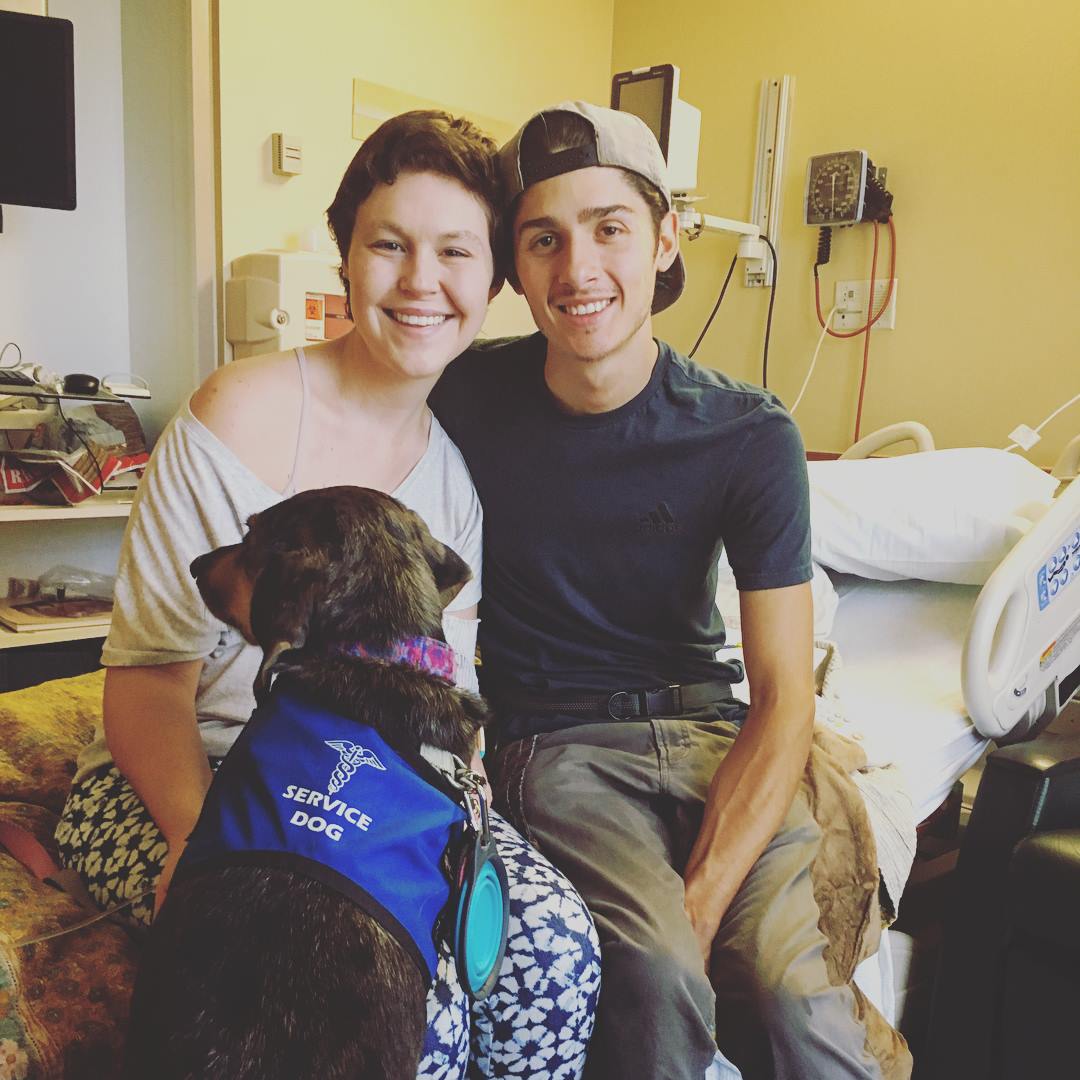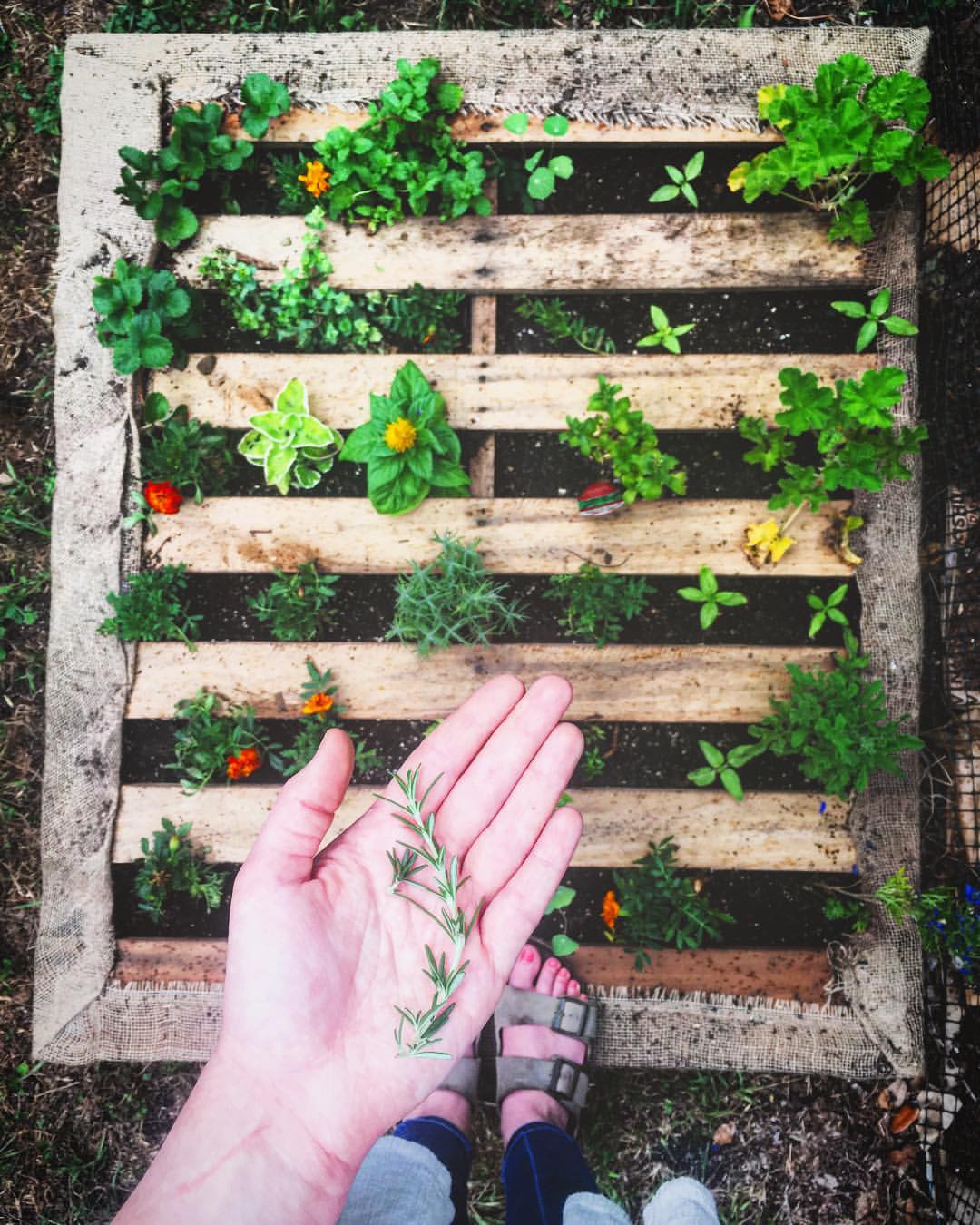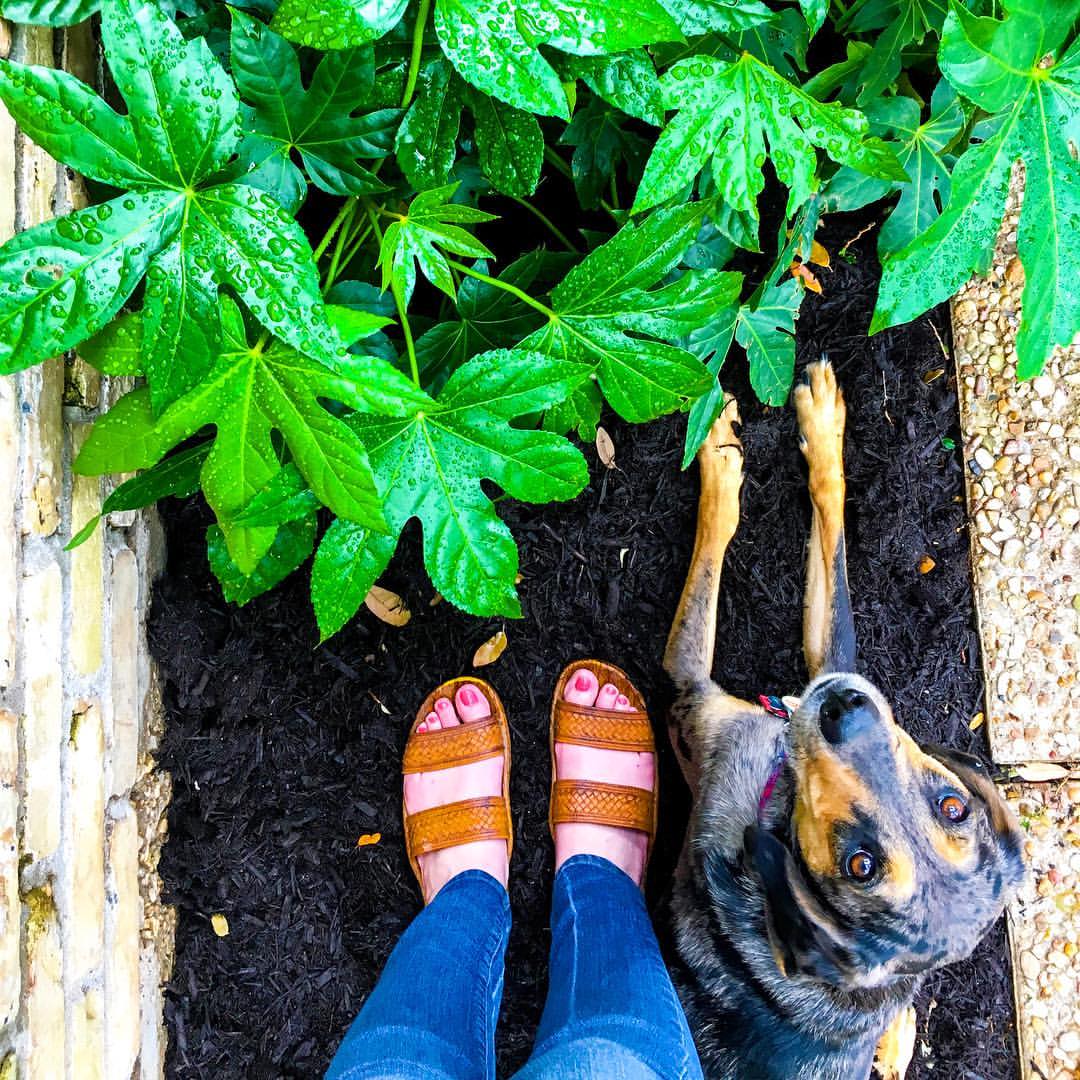Enter CeCe Collins, one of the strongest and most intelligent people I know. CeCe lives with multiple chronic illnesses including Ehlers-Danlos Syndrome, Sjogrens, and Dysautonomia. She does a lot of her own research to manage her illnesses. I met CeCe in a Spanish class in my first semester at Hendrix College and my first impression of her was thinking, “Why is she in this Spanish class? She definitely doesn’t need it,” while the rest of us struggled and I still firmly believe our professor hated me. I DIGRESS.
CeCe helped me through the mental struggles of diagnosing my own mystery illness when I lost the feeling in my arm. I knew she too had arm numbness and knowing she was a chronic illness superhero, I reached out to her only to have her give me all the weapons I needed for navigating through the medical field in my journey. I could write about CeCe forever, but read on to hear what she has to say about what she’s gone through and currently lives with on a day-to-day basis:
(This is a LONG, but VERY GOOD read that I’m breaking up into parts)

Q: What are some recent studies concerning any of your illnesses and how have they impacted you/your treatment? Have you participated in any clinical trials?
Dr. Brent P. Goodman’s most recent research on POTS
I have not participated in an official clinical trial. I have participated in independent research for several physicians. For POTS, I participated in a research study aiming to find specific autoimmune antibodies in certain POTS patients. This was done at the 2016 Dysautonomia International Conference last July. For Sjogren’s at this time, there are very few (maybe zero at the moment) clinical trials that I would qualify for because of the strange combination of conditions that I have. My EDS, MCAD, LAC, and previous Schwannoma tumor really complicate things. There also doesn’t seem to be a huge interest yet in a large study of Sjogren’s Syndrome with primary symptoms of autonomic dysfunction as the the initial manifestation of the disease. In a way, I am being observed by Dr. Goodman, my neurologist at Mayo, who is essentially doing independent small case studies on patients exactly like me. He has sort of single-handedly created different diagnostic tests in addition to the standard criteria tests to diagnose Sjogren’s Syndrome because he specializes in getting to the root cause of autonomic dysfunction and in particular, he has specialized in patients with who present with autonomic dysfunction due to underlying Sjogren’s Syndrome. Essentially I am doing my part as a patient to participate in whatever way possible to further medical research and knowledge of all of my conditions, Dysautonomia in Sjogren’s Syndrome and just Dysautonomia and POTS in general as well as Ehlers Danlos Syndrome and the association it can also have with POTS and autoimmune disease.

Dr. Goodman just published the FIRST official publication documenting successful treatment using immunotherapy in the form of IVIG for Sjogren’s patients with severe autonomic dysfunction. Goodman has essentially been one of the only physicians to actually TREAT us as patients with various medications and methods of immunotherapy in order to see if there was a viable treatment option for Sjogren’s induced autonomic dysfunction. With each manifestation of Sjogren’s, there are different treatments, and the autonomic dysfunction has been only recently connected to Sjogren’s in addition to being severely under recognized as a serious complication of Sjogren’s. This means that there was no pre-existing data on this type of Sjogren’s patient so there are technically zero treatment options and the typical approach is to be very conservative and only use the most basic of autoimmune disease management tools like Plaquenil, maybe some steroids occasionally (but never long term), and maybe methotrexate. None of these drugs are good options long term nor do they actually control aggressive Sjogren’s or slow down the damage to the autonomic nervous system, which is obviously a problem. So Goodman took the initiative to think outside the box, using way more aggressive treatment through immunotherapy. IVIG is a very common treatment for other neurologically based autoimmune diseases like CIDP, Guillain Barre, more recently MS, certain manifestations of Lupus, Myasthenia Gravis, Myositis.
Q: You’re training your dog to be a service dog. How will Ruca help you with daily tasks?

AH! Yes I am SO excited and SO grateful that I have been able to train Ruca as my service dog. We have contemplated the benefits of a service dog for me for awhile. We were going to apply for a service dog from a reputable program, but I began researching other options and came across a trainer in Austin that would do a behavior evaluation on your current dog if you were interested in attempting to try and train that dog as your potential service dog. Plus, the idea of waiting 2-4 years to get a dog from one of the service dog programs was difficult because I really needed assistance ASAP and that is a really long time to wait. So, Ruca passed her evaluation and we decided to give it a try! She is truly a phenomenal dog and is incredibly intelligent. The tasks she has learned to do for me since starting training 4 months ago are mostly related to mobility assistance, basically helping me with tasks around the house so I can still be somewhat independent and able to do tasks of daily living but also can conserve my energy and not aggravate certain symptoms.
-
- Retrieving items: Ruca picks up anything I drop or if I point to something on the ground or lower than my reach. This is a huge help because it limits me having to bend over which typically causes me to get vertigo/tunnel vision/black out feeling immediately because this is a trigger of my POTS. I also get severe neck and headaches from bending over due to the POTS. The easiest fix was to train Ruca to assist me with picking up and retrieving items on command.
- Laundry Help: Ruca also helps me with chores like laundry that require a lot of strength and energy, as well as bending over. She is able to take the dirty clothes I need washed out to the laundry room by gently tugging the laundry basket or bag. Then I wash the clothes and put them in the dryer, which are less strenuous tasks. Once the clothes are dry, she comes with my to the dryer and places the clean clothes in the clean laundry basket. Once full, she tugs the basket back inside to my room so I can put up my clothes. With laundry help from Ruca I don’t have to lift a heavy, awkward basket or hamper of clothes and aggravate my neck or back issues or cause me POTS symptoms. I also don’t have to bend over repeatedly for an extended amount of time and trigger my POTS. I also am just not able to maintain the energy or strength needed at this time to be lifting a loaded laundry basket or do the full laundry thing by myself. A simple task like laundry can cause me so much fatigue that it would seriously hinder the rest of my activities for the day or even the next day.
- More Strength Saving Task Help: Ruca also helps around the house by opening or closing things on command that might be too much of a strain for me to do myself due to heaviness, position, or just depending on how I am feeling. She can open the fridge and grab me a drink if I am dehydrated or have low blood sugar or am having pre-syncope from a POTS flare.
- “Blue Bag” Emergency Kit Retrieve: I have a special bag that is always in our living room under the TV with all my medical equipment so that I can promptly check my vitals and monitor certain things at certain times during the day or if I am particularly symptomatic. It also has emergency meds like my epi pen, benadryl, aspirin, etc and things like quick pain relief tools like hot packs, biofreeze, etc. This is an organized way to make sure that I can always track my daily vitals like BP readings and other things my doctors need me to monitor. If I am unable to get up and get my kit because I am really sick or have a headache, might risk fainting due to low BP, etc Ruca goes and retrieves the bag for me, ensuring that I am on top of my daily health monitoring and that I am able to make connections between physical symptoms and how my body is actually functioning internally.
- Medical Alert: We are still working on Ruca doing a medical alert on me, but right now it seems as if she is altering to episodes where my blood pressure drops. The goal would be for her to eventually be able to sense my POTS episodes at the very start where my BP dramatically changes very rapidly, usually upon standing or changing position, to alert me to immediately lie down or take medication or do whatever I need to do to prevent a full blown POTS episode. Right now she has been whining at me at certain random times with no other cause for her to be whining. When she whines directly at me, I check my BP. Every time it has dropped significantly, so she is definitely alerting which is great!
- Carrying Things: Also working on Ruca carrying bags of things like groceries and helping unload or pack up the car.
- Bracing/Balance: As my balance and steadiness have gotten worse, we are working on having Ruca push against my lower half to steady me and also having her stand very still to allow me to brace on her back, sort of bent over if I am out standing somewhere and suddenly feel light headed. This might allow me to recover and not need to go fully down or will allow me to slowly steady myself to the floor to sit down, while bracing against Ruca for support to avoid fall.
- DPT or Deep Pressure Therapy: DPT is a therapy used for a variety of things, but a lot of times you see it with service dogs for autism. Basically, it is a pressure based technique where the dog puts all body weight on top of you or over your legs/lap to provide a stimulatory effect of heavy pressure, grounding you. I don’t need this for psychological reasons, but it actually also improves pain attacks. I often have episodes of pain that builds and builds and my nerves can’t unwind. Some people call it wind-up syndrome. I also get muscle jerks and tremors that I can’t control that will often cause very painful spasms that won’t quit. When Ruca puts her weight on me, it actually acts as a sensory tool that de-triggers or desensitizes my pain, and my pain receptors, mind, body, whatever, can forget about the pain feeling and focus on the weight, which then usually helps or alleviates the pain attack. This will also help for episodes where I have body tremors or shakes. The DPT should help calm down my sensory system and provide relief.
Q: What are your favorite hobbies?
My favorite hobbies are gardening and growing things. I love planting seeds and watching them grow. I think I have loved gardening a lot more since getting sick because the garden is kind of the perfect place to understand the idea of impermanence. You nurture all these plants, they grow wildly for awhile, and then they die, as everything does in a garden. I just really resonate with that metaphor and I think that it kind of helps me realize that nothing will ever remain the same and change is inevitable.

I have really developed a passion for training Ruca and I love spending time with her, perfecting tasks, and learning new things together. I love photography, but am sadly an owner of a dead camera, so I have been using my GoPro more and am slowly starting to try my hand at making daily vlogs of my life with chronic illness. I am also working on launching my blog, www.getyoursicktogether.com.
I also love to make jewelry and a few other cute items like pom pom pillows and other accessories and now that I am no longer working I am hoping to pursue some of my creative entrepreneurial side and sell my pieces through my website or something.
I am involved in moderating the big POTS support group for patients and caregivers on facebook and I also volunteer with Dysautonomia International focusing now on starting a Texas chapter in line with the vision to have a DI branch in every state to provide more resources and more connected, local-level support for Dysautonomia patients and their families. I also paint occasionally, am slowly learning to play the ukulele, and of course enjoy netflix binging like any other millennial.
Q: You have a pretty bomb Instagram presence, teaching people about Sjogrens, Ehlers Danlos, etc. and showing real, raw photos of what patient life is like. What inspires you to share these photos and educate others? How do you look good literally all the time? 😉
Thank you! I do try to have a strong social media presence in part to preface my upcoming (very soon) blog and vlog platforms. I also think Instagram is a particularly good place to get a huge audience to see you and see what you are saying, what you are about. I have actually had several chronic illness patients find me through Instagram probably through the hashtags that I use. I share what my life is like as I live every day facing the struggle of chronic illness because you are exactly right, I don’t look sick. I look pretty good most of the time. And that makes it much harder for people unfamiliar with chronic illness and invisible illnesses to understand what I go through on a daily basis.
There are A LOT of sick people on this planet and not all of them have cancer and no hair or a missing limb or anything at all noticeable that identifies them at sick. If you do suffer from chronic illness, there are little things that they might be able to notice like arms full of bruises from constant IVs, certain awareness clothing or stickers they might have on them, maybe they are wearing compression stockings…these things are totally invisible to a normal person because they aren’t familiar with our day to day life.
My ultimate goal is to share my story, share my insights, experiences, advice, successes and failures with other chronic illness patients to give them hope and help them find that inner peace and acceptance of being sick that eventually comes but takes awhile to find. I want to help patients not feel alone, know that being sick doesn’t mean life is over, and I want to show other patients how to take charge of their chronic illness journey and do allow it to shape who you are, for the better. I also want to put myself out there for the families and friends of those patients to help them understand what life is like for someone with chronic illness. It is extremely difficult for a lot of family members and friends to truly grasp what we go through on a daily basis.

You’re too kind to comment about my looks…I am not going to lie I DO edit and I DO filter and I love Lightroom and Photoshop so I definitely have an aesthetic I work hard at maintaining! And again, yeah, a big part of my social media presence is geared to emphasize that I look like a normal and happy-go-lucky 23-year-old on Instagram….but oh look, I am actually not normal. I am extraordinary because I, along with thousands of other patients like me, struggle with chronic illnesses that are not often visible on the outside, but wreak havoc on our insides and cause debilitating symptoms and complications. When people read my posts, maybe they will learn something they never knew before.
Maybe they have been struggling with an unknown illness and it gives them strength and motivation to keep searching for answers and not give up. Maybe it will mean that they WILL believe their best friend when she gets sick and never feels better, but can’t seem to get a diagnosis because her doctor doesn’t believe her. Maybe it will help a chronic illness patient’s parents let go of the fear that their now sick child will never be normal and will allow them to move forward as a family in support of their child’s wellbeing and happiness. Maybe a former Hendrix classmate is now in med school and my openness as a patient sharing my experiences with the medical community will encourage them to never discount a patient just because they can’t find the diagnosis. Maybe it will help a few med school students see that not everything is a textbook case, patients who defy statistics do exist, and they can’t be helped through the familiar logic with which they were trained. Maybe they will graduate to be doctors that don’t dismiss a patient so quickly, in order to protect their own egos, but instead choose to exhaust all resources and humbly admit when it is time to let the patient go to a doctor with specialized knowledge that is only gained by listening to patients and solving diagnostic puzzles.
Maybe it will inspire future doctors to try harder and to always remember that behind the disease, there is a patient. And this is what she looks like.
Q: What gives you strength when things get hard?
I use the resiliency that I have created in myself over all the times things kept getting worse but I kept fighting until I won whatever battle it was at the time. There are definitely times where it is almost impossible to find the strength and I kind of feel like I am just floundering, unable to put in any effort and I just feel numb. This happens frequently, especially now honestly, but this feeling is short lived and I manage to pull myself out of the rut by taking one step at a time and accomplishing the most simple things to help me feel successful. Sometimes the hardest part is that I know that I am trying and that I am pushing through and doing everything I possibly can do right but my body is fighting me tooth and nail and my body wants me to lose. It is really hard to battle with your own body like that, to not be able to do the things you want because your body refuses to cooperate. It feels a little like my own body is betraying me on a daily basis and that takes extra energy and strength to get over.

It is hard to get my strength from within myself. I think anyone would tell you that it is difficult to remain strong, motivated, and positive about your situation if you don’t have something bigger, like a mission or a goal or a purpose to your life. That is what drove me to start a blog and vlog and just share my life with other people. I wanted to impact other chronic illness patients in a positive way because I genuinely feel like this is what I need to be doing. I’ve been sick for long enough to where I am at least a pro in some areas. I definitely don’t have all the answers and there are times when I wonder if I know anything at all really, but I am positive that even if I only help one other patient, that is good enough reason to me to take the initiative and get my sick together so that I can help others get their sick together, too.
Q: What are your goals for the future?
Ahh, “the future”. Well, one thing that has definitely changed with my perspective on the world is what my definition of a future is.
Since getting sick, one of the side effects seems to be that I live a lot more in the present!
I used to be obsessed with the future and past. Honestly, my biggest goal right now is that I fight like hell with my insurance company over the IVIG treatment that I need and I win. So, my future in terms of a few months from now, should be filled with weekly IVIG infusions and unicorns, puppies, butterflies, and rainbow flowers raining down on me because I am confident that IVIG is going to make me feel better and I will finally have won the biggest battle yet. (side note: the IVIG may not work, and that is ok. We will go to plan B. But I like to think that the more I envision it working, the more likely it will work).

So yeah. My plans for the near future right now are just surrounded on me getting the proper treatment I need so that I don’t, um, well maybe die. How can I really plan anything long term with how sick I am right now? I really can’t. I can’t even think that far ahead because I think my brain is so used to things never going any planned way that it is content with small goals in small increments of time 🙂 And I am A-OK with that!
Another near-far goal is to have Ruca be my 100% official service dog by passing the public access test. We are currently just now starting our public training sessions and so far she is doing great. But I will be thrilled when she passes that test!

That’s it! Check out CeCe’s blog or follow her on social media to keep up with her story. Thank you CeCe for sharing your story on The Barefoot Aya and for being such an inspiration to everyone – not just other spoonies.

CeCe Collins is a full-time chronic illness fighter living in Austin, TX. She shares raw photos of her day-to-day life on social media in order to help, inspire, and advocate for others. You can follow her on Instagram @cece_getyoursicktogether or read her upcoming blog & vlog, Get Your Sick Together. You can follow her service dog Ruca on Instagram at @right_hand_ruca.
Related Content:
- Mental Illness and Invisible Illness | Out of My Thoughts
- Proud With a Heavy Heart | Changing My Mindset
- The Mystery Illness | The Barefoot Aya
- …Hearing a Serious Diagnosis | Heart Sisters
- Paying Extra to Live My Life | Scope’s Blog
Photo Credit: CeCe Collins

